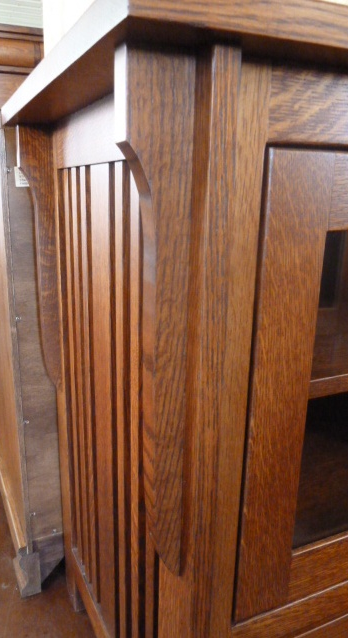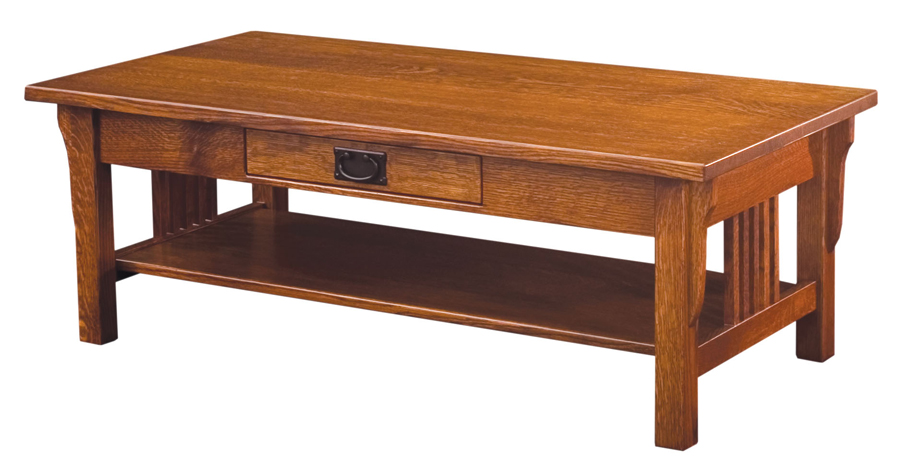by Vicki Nemeth
Choosing handcrafted wood furniture can be so much more complicated than picking up particleboard at the big box store. You have more style features and customizations to choose from. No surprise that we get a lot of questions about what we mean when we talk about features. So let’s talk about corbels.
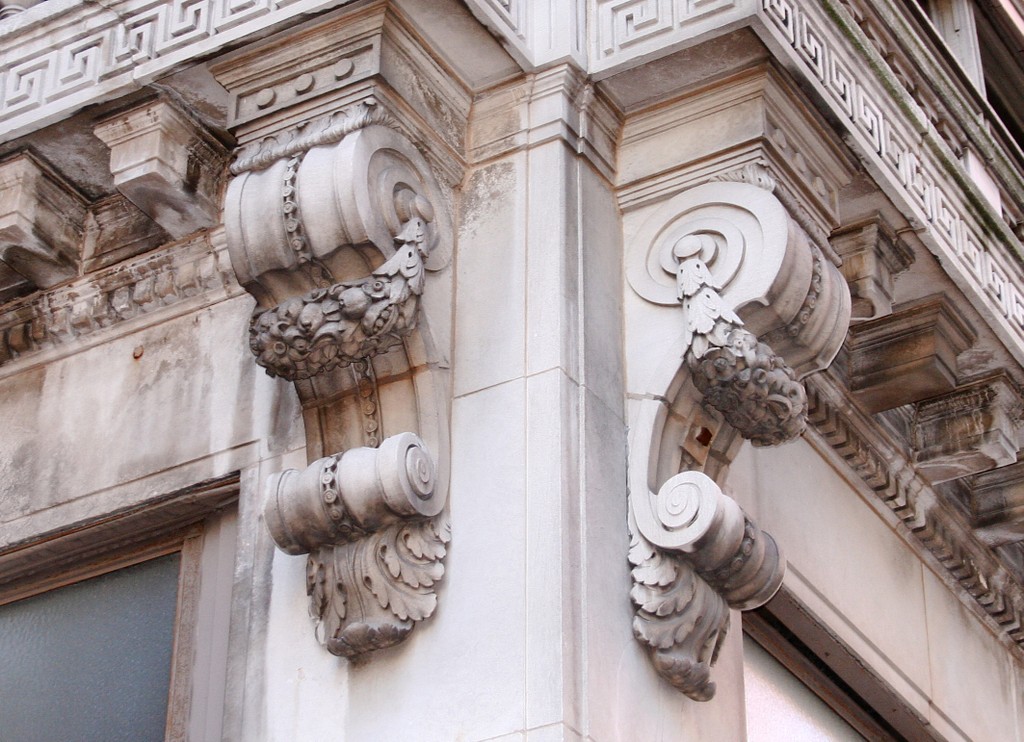
What is a corbel?
A corbel is a kind of triangular bracket that holds up protruding pieces against vertical surfaces in furniture and architecture. What sets corbels apart from regular brackets is corbels contribute to the style of a piece of furniture or architecture in addition to its structural integrity.
Sometimes corbels are not necessary to hold a piece of furniture together, but the extra support still improves its longevity. Occasionally, they are purely decorative. But nearly all corbels have something to contribute to the lasting quality of handcrafted furniture.
Here is an example of a corbel on a piece of Mission-style furniture.
You can see that it’s not a perfect triangle, but it does include that basic profile. Notice the squared angle where the top of the corbel meets the side of the corbel that attaches to the side of the furniture. A triangle with a square angle is called a right triangle.
The third side of the triangle is the weight-bearing side—math fans may know it as the hypotenuse—but it doesn’t need to form the perfectly straight line of a real triangle to provide support. This particular corbel’s hypotenuse runs down, then curves inward and down further.
Here is what this corbel looks like from the side.
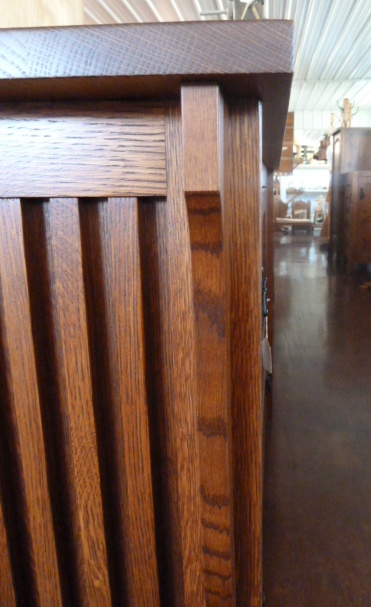
Notice how it has a defined width that is quite narrow in proportion to the furniture. This corbel’s width and vertical length match it to the accompanying side slats and, as a result, to this table’s Mission style.
What do corbels do?
More than just “holding things up,” corbels use mass, pressure and gravity to support furniture in a variety of ways. Here are three important ways corbels provide support.
Stylish Triangle Brackets
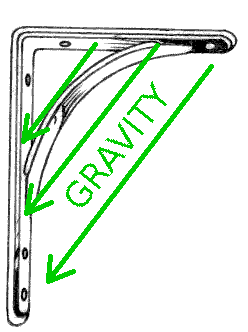 Corbels provide bracketing to brace a horizontal protruding surface against the vertical side beneath. A corbel’s triangular shape directs weight across the horizontal top and distributes pressure down the angle of the third side, tensing against the bottom of the vertical side.
Corbels provide bracketing to brace a horizontal protruding surface against the vertical side beneath. A corbel’s triangular shape directs weight across the horizontal top and distributes pressure down the angle of the third side, tensing against the bottom of the vertical side.
The resulting strength plays out when different kinds of stress affect the protruding surface.
First, remember that gravity is always at work. Even when there is no extra weight on the furniture, protrusions will always be pressing down. Gravity on its own doesn’t seem like much pressure, but with furniture that is intended to last several generations, the support actually makes a difference over time.
When there is extra weight pushing on a table top, it is less likely to buckle downward with a corbel in the way. If anything falls or slams on that top surface, the support helps keep it from breaking off in a downward direction. When the wood absorbs moisture changes in the air, it will be pretty hard to warp and curl down with those supports underneath.
Some designs rely on sets of corbels called corbel tables. This Manitoba Hutch has a corbel table all around the top to help it stay in shape.
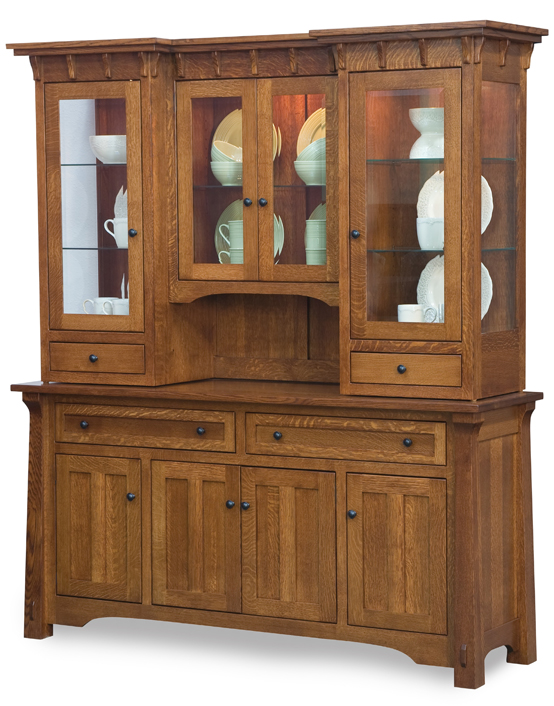
Use the Strongest Parts of Furniture First
Another way that corbels can redirect weight is to add tension to the strongest parts of furniture and relieve parts that are not made to hold weight from above. Any protruding surface has the least support at its outermost edge, so it presses down and in from that edge. A corbel protrudes closer to where pressure occurs first, so the corbel catches that pressure. A builder or engineer can place corbels on the vertical surfaces best suited to holding extra weight.
As an example, look at this Artesa bookcase. It has corbels only on the frame corners, so the top’s weight presses down mainly on the frame. This helps keep the top from pressing inward against the front skirt under the top, as well as the side panels.
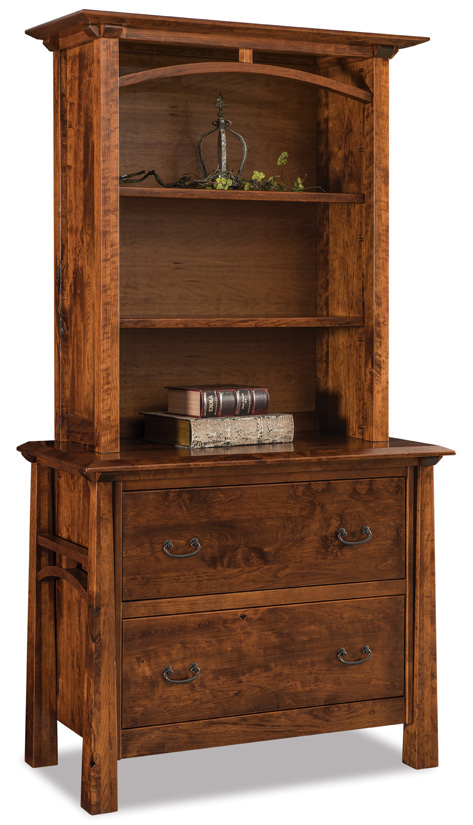
This cushion chair has corbels under the arm rests, but only up against the legs, which are thick, solid and framing the whole chair. The builder avoids putting a corbel against the side panel where it would press into the middle and possibly cause a bend. These corbels direct not only the weight of the arm rest to press against the chair legs, but also the weight of a person’s arm when they use it.
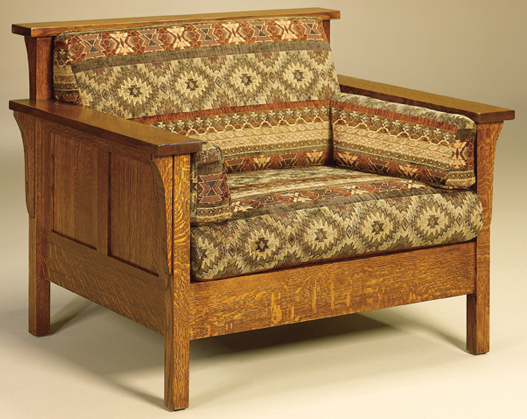
More Potential for Fasteners
Of course a corbel is more wood, so there are more places to apply more securing anchors for your furniture. A corbel’s surface area is a great place to glue a table top down so it won’t warp and curl upward easily. Some designs also use corbels’ extra wood volume to put dowels, screws, trestles or joints through.
On some pieces, the corbel is the main part of the frame. Here is a free-standing shelf whose corbels hold the whole thing together.
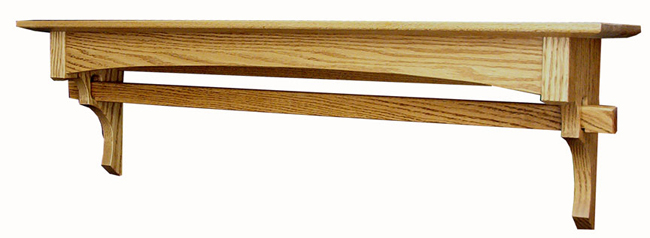
This shelf has two corbels, a top, a back, and a skirt in the front. The corbels brace the top shelf against the wall so it doesn’t just snap off and down. The tops of the corbels provide more surfaces for glue, so it won’t just snap off the back piece either.
These corbels are thick enough to couch mortise and tenon joints that fit the back frame and front skirt between them like puzzle pieces.
The quilt shelf above has a holes in the middle of its corbels so quilters can run a bar through it. A corbel’s triangle shape holds furniture together, so its center provides extra space where designers can get creative. That’s why some corbels are intricately carved or consist of only the diagonal side. A corbel with a hole in the middle still works.
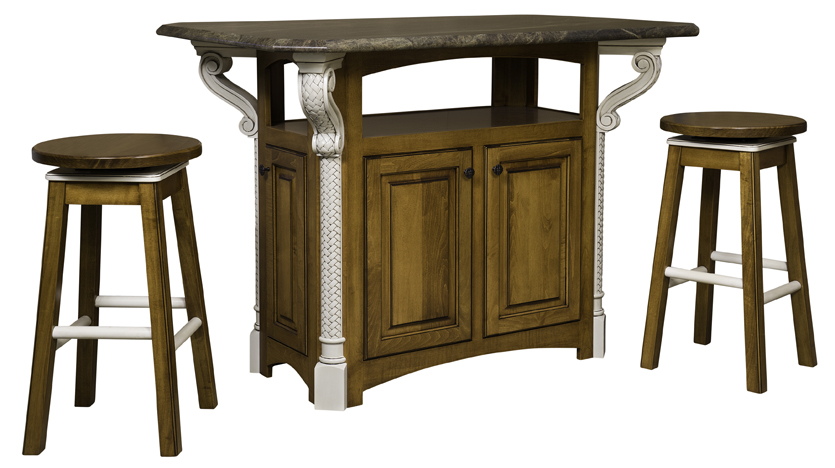
What design elements are easy to mistake for corbels?
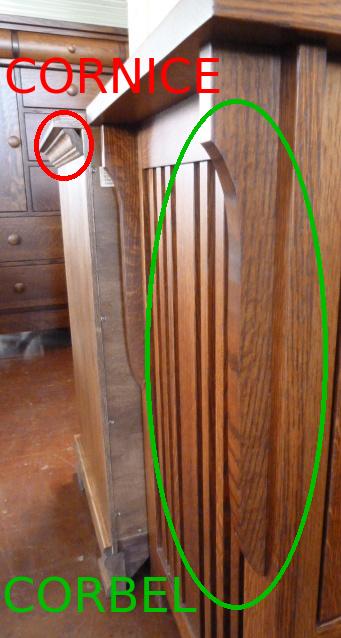 A corbel is an angle that holds up weight in a two-dimensional way. Some elements of furniture are easy to mistake for corbels because they are under a table top or also use angles. When identifying these items, ask yourself:
A corbel is an angle that holds up weight in a two-dimensional way. Some elements of furniture are easy to mistake for corbels because they are under a table top or also use angles. When identifying these items, ask yourself:
Do they rely on an angle that is further out directly beneath the weight above, and further in against a vertical surface at the angle’s bottom?
Are they vertically much more narrow than the furniture?
These key traits will help you distin guish unlimited design elements from corbels, and here are three examples.
A cornice is not a corbel
A cornice is a wide piece that crowns the top of a piece of furniture. Some cornices, if they are at the correct angle, can support furniture tops. Cornices’ angled support provides similar function to corbels, but unlike narrow corbels, cornices cover the full width of a furniture piece and go around the sides. Cornices often provide decorative crown molding.
Dentils are not corbel tables
Dentil molding consists of decorative square or rectangular blocks called dentils. They are popular to carve beneath cornices to obscure the distinction between the side of the main piece and the bottom of the cornice.
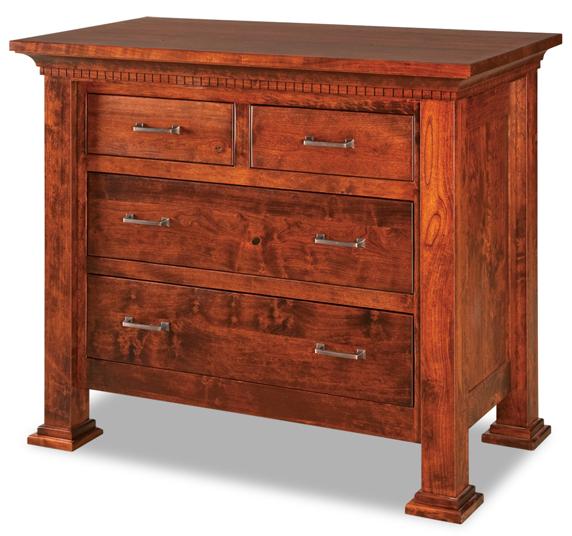
Though they may be in the right spot, dentils don’t use the same triangular shape and don’t provide the same support. They also sit much closer together than the corbels of a corbel table.
Spandrels are not corbels
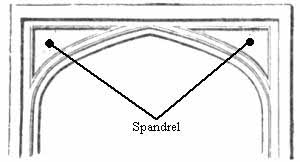
Spandrels tend to have triangular shapes and may be carved as ornately as some Queen Anne style corbels, but their origins differ. In order to add corbels, a builder needs to make them separately and then apply them to a structure. In contrast, spandrels are the necessary result when a builder creates a curve such as an arch inside a square or rectangular structure. Each spandrel is the extra space between the curve and the nearest corner. Most arches have two spandrels above.
More Quality and Style
Whatever your hardwood furniture has around the top, you can rest assured that it will be built to last if you choose heirloom pieces that are made in the USA.
Do you have any corbels in or on your home? Brag about your style in the comments below.
